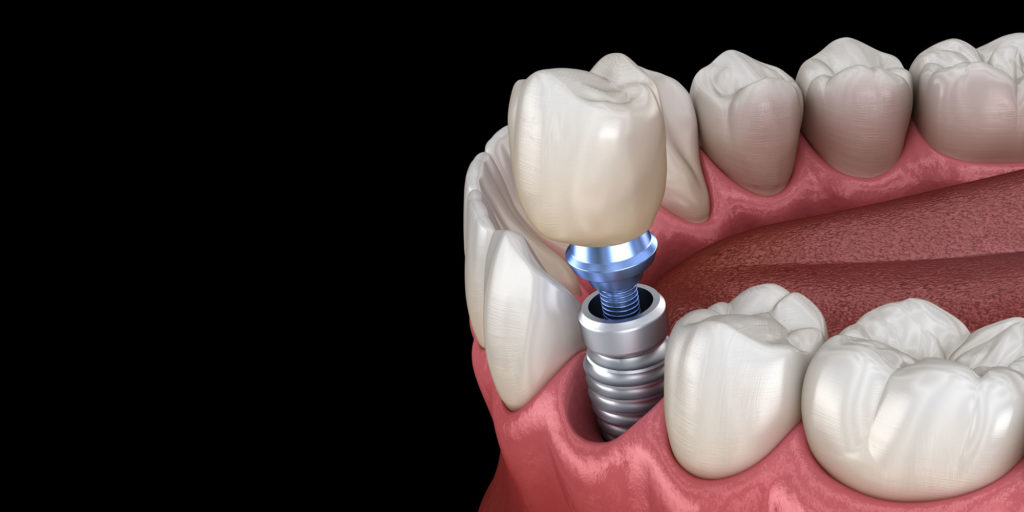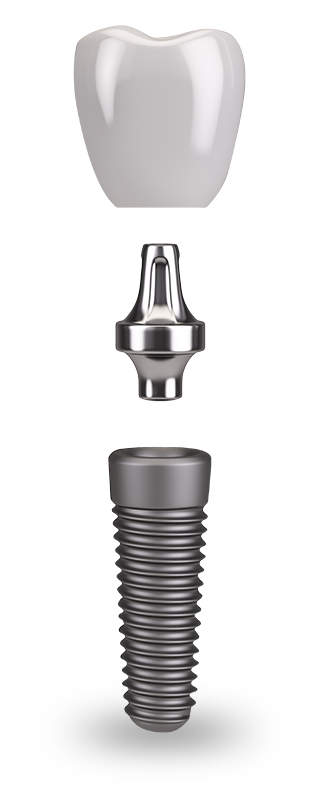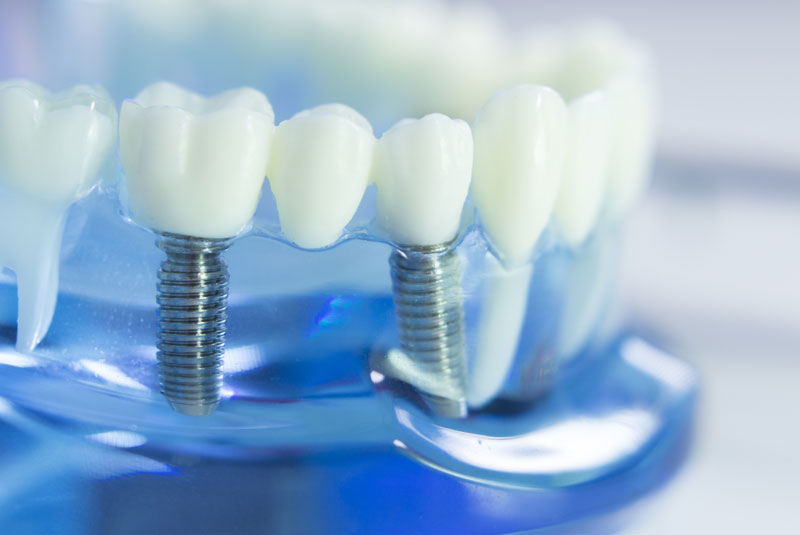Did you know?
1
%
An estimated 69% of adults ages 35-44 have lost a minimum of one tooth to either injury, decay, or gum disease.
1
%
By age 74, 26% of adults have lost all of their permanent teeth.

Dental implants are now the generally preferred tooth replacement treatment over partial dentures and fixed bridges. Traditional treatments either rest on your gums, as with removable dentures, or rely upon adjacent teeth to serve as anchors for fixed bridges. Dental implants are placed into the jaw bone, offering a highly successful, long-term replacement option.

Crown
Abutment
Implant Post

Despite long-term complications, these bridges and dentures are still safe and viable. Research indicates that dental implants yield better long-term results for tooth replacement. Titanium implants are surgically placed into the jaw bone, where the implant fuses with the existing natural bone in a process called osseointegration. Properly integrated implants do not slip or make embarrassing noises and are more difficult to distinguish from your natural teeth. Because they mirror tooth and root structure, implants provide stimulation for the jawbone, preventing bone loss, while their titanium composition makes them resistant to decay. These factors contribute to the long-term success of dental implants and subsequent overall oral health.
Dental implant technology has been around for over 20 years. Not only does the technology continue to develop and improve, but it has also stood the test of time! Patients who received implants in the ’80s and ’90s continue to report optimum functionality of their implants. With proper care and hygiene, dental implants are truly a life-long solution for missing teeth.
Dental technology now offers alternatives to the traditional methods of tooth replacement: dentures and fixed bridges, which are associated with increased complications over time. Removable dentures cause bone loss which impacts facial structure and can loosen or alter denture fit. Improperly fitting dentures can make embarrassing clicking sounds when eating or talking. Fixed bridges are placed by grinding down remaining adjacent teeth, also known as abutments, making these healthy teeth more susceptible to damage.
An estimated 69% of adults ages 35-44 have lost a minimum of one tooth to either injury, decay, or gum disease.
By age 74, 26% of adults have lost all of their permanent teeth.
I understand the information disclosed in this form may be subject to re-disclosure and may no longer be protected by HIPAA privacy regulations and the HITECH Act.
